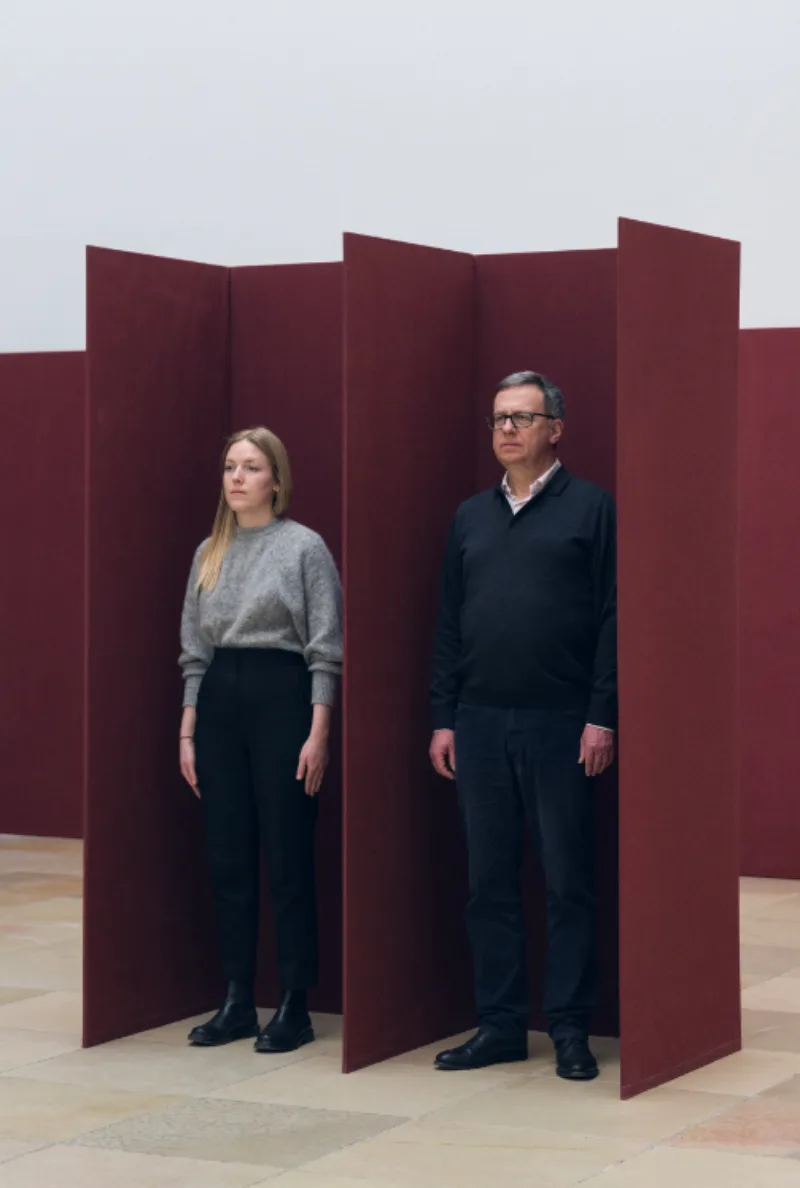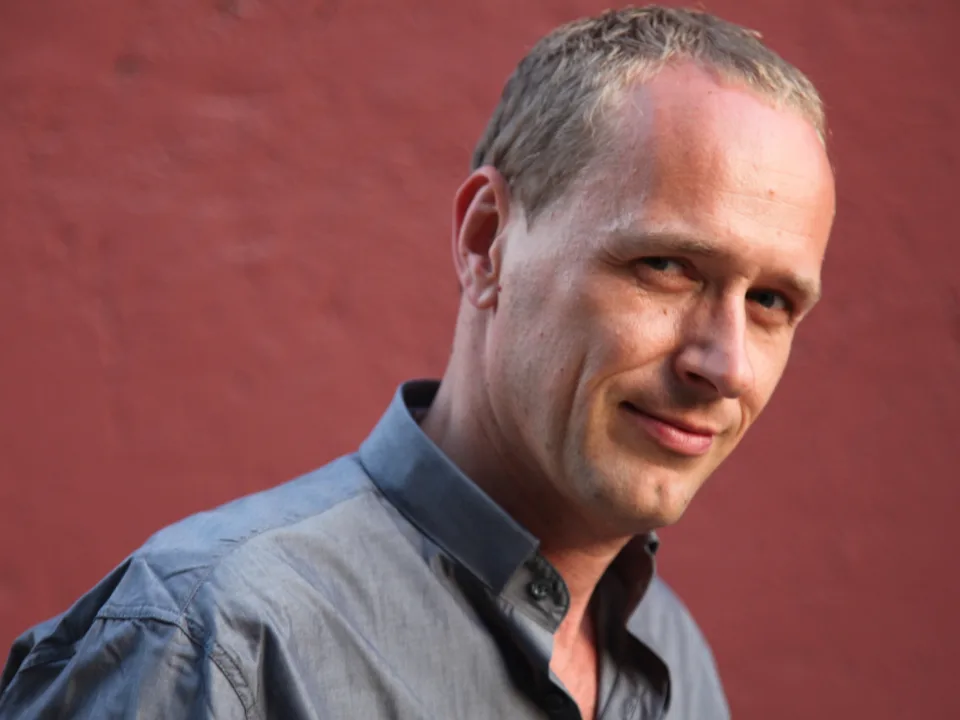This blog series is an homage by four former students of the artist and teacher Franz Erhard Walther. In a poetic, fragmentary and anecdotal manner, they speak of formative memories from their study years, as well as of the longing, praise and uncertainties in their search for their own artistic language. For us, they have a look back in time.
I went to Franz because everyone told me that, with him, you can become something.
When I entered his class, there were only three students—that’s how elitist it was. Many of those who came to the public and usually well-attended work discussions were close to tears at first when Franz commented on their works—as was I the first time. It seemed that so much depended on his assessments. Yes, he was extremely critical, but when he liked something, you also had the impression that it meant something. By that time, I had already stopped painting and increasingly felt a sense of recognition when he found something useful among my works. Especially at the beginning, he spoke about a lot of things that were still incomprehensible to me ... which deeply inspired me; it was about standards from an enigmatic world, about what happens between cores and coats, as well as between heads that draw and hands that think.
What I admired about Franz was that he was such an active artist: He was the prime example of what it meant to live as an artist. It often happened that he would just pop in, say something about a new catalogue he was about to publish, and then disappear again. I never held it against him, because I was aware of the fact that, in such moments, he was in high demand.
And he was always concerned first and foremost with art. That was a decisive experience that I was able to make. The simple fact that someone exemplified this attitude: You can live as an artist, and this is kind of what it looks like. What impresses me about Franz’s work is the sovereignty with which he very strategically and consciously refers to art history and repositions himself within it. The way he uses simple words and simple materials to formulate things in a very fresh way. Sometimes mocking, always defending his name and positioning his work ... always interested in dates, in who did something first. It cannot be overlooked how persistently and coherently his work presents itself today. Highly topical, and yet simultaneously timeless. By activating the sculptures, placing yourself in the Wall Formations, and by active participants within the space, you always get a magical ‘Walther kick’: a sculpture-performance sandwich.

I am particularly touched when recipients join in and participate in the work together with Franz himself; because then, the artist appears at eye level. Not only: ‘The artist is present’—no: We are present! We can enter his work on different levels: playfully acting and intellectually.
Christian Jankowski (*1968) lives and works in Berlin. Jankowski studied fine arts with Franz Erhard Walther at the University of Fine Arts in Hamburg. His works occupy the field of conceptual and performance art, for which he employs a variety of media and genres, including film, video and photography, as well as painting, sculpture and installation. Jankowski organizes collaborations that bring together contemporary visual arts with religion, politics and entertainment. His works are in the collections of the Metropolitan Museum, New York and the Tate Modern, London.
Read more artist texts of this series written by Stef Heidhues, John Bock and Peter Piller.
